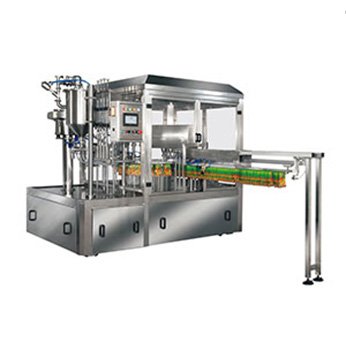What is a bone bag?
A bone bag, often called a bone bag (due to its shape) or more technically a zip bag or grip bag, is a common type of plastic packaging bag. Its most notable features are:
A pre-pressed plastic seal at the bag’s opening typically consists of two raised “ribs” and a groove.
The seal is sealed by squeezing it open and closed: pinch the sides with your fingers to close, and pull it apart to open.
It is reusable, allowing for multiple access to its contents.
Due to its opening and closing method, it is also commonly known as a ziplock bag or zipper bag.
What is a bone bag bagging machine?
A bone bag bagging machine is a type of automated packaging equipment specifically designed to automatically load products into prefabricated bone bags (ziplock bags) and automatically complete the bag opening, feeding, venting, sealing, and discharging operations. It significantly improves packaging efficiency, saves labor, and ensures consistent packaging appearance. Based on the degree of automation and applicable scenarios, these machines are primarily categorized into the following two types:
Fully Automatic Bone Bag Bagging Machine
Workflow: The machine integrates all functions including bag removal, opening, date printing (optional), product loading, extrusion and degassing, sealing, and finished product delivery.
Features: It has the highest degree of automation and is typically directly connected to front-end production lines (such as weighing machines, elevators, and conveyor belts) to form a fully automated packaging line.
Applicable Scenarios: Companies with regular product shapes (such as blocks, pancakes, and bagged products) and large production volumes, such as food factories and chemical companies.
Semi-Automatic Bone Bag Bagging Machine
Workflow: The product and bone bag are manually placed in designated workstations. The machine then automatically completes the bag opening and sealing (sometimes including degassing).
Features: Simple structure, low price, and small footprint. Efficiency depends on operator proficiency, but is still significantly higher than manual operation.
Applicable Scenarios: Small and medium-sized enterprises with frequent product size changes, medium production volumes, limited budgets, or production lines requiring flexible changeovers.
Working Principle and Process (Using a fully automatic machine as an example)
Bagging: Pre-made bone bags are placed in the bag storage, where a suction cup device picks up one bag at a time.
Bag Opening: A suction cup draws the bag opening open, or a gripper/pole holds the bag open.
Feeding: A robot or pusher accurately pushes the product into the open bag.
Degassing (optional): The bag containing the product passes over a pressure roller or device to remove excess air, ensuring a flat and tight package.
Sealing: The bag moves to the sealing station, where a heat-sealing device heats and pressurizes the self-sealing strips on the bag, ensuring a perfect bond.
Output: The packaged products are transported via a conveyor belt and can be connected to a case packing station.
Application
In fact, a large number of products, especially parts and small items that need to be protected, categorized, and included with the main product, are often sold in bone bags.
These products typically have one or more of the following characteristics:
Small size, making them easy to lose or mix up.
Need to be kept clean and free of scratches.
They are accessories or accessories to the main product.
Need to be clearly identified during distribution.
1.Electronic Products & Appliance Accessories
This is one of the most widely used areas for bone bags, primarily to protect against dust, moisture, and static electricity, and to facilitate management and identification.
Remote Controls: Not only for air conditioners, but also for appliances like TVs, set-top boxes, fans, and speakers.
Data Cables & Connectors: USB cables, HDMI cables, power cables, and headphone cables.
Adapters & Chargers: Mobile phone chargers and router power adapters.
Small Parts: Screw packs, mounting brackets, manuals, and warranty cards (all placed together in a bone bag).
Electronic Components: Retail circuit boards, chips, LEDs, switches, etc. (often in anti-static bone bags).
2. Hardware & Home Furnishing Parts
These small parts need to be organized to prevent rust and scattering. The transparency of bone bags allows for easy identification of the contents.
Fasteners: Screws, nuts, nails, expansion tubes (these are the most common! They are readily available at hardware stores).
Furniture Accessories: Furniture installation kits (including screws, connectors, and wrenches), cabinet handles, hinges, and slides.
Tool Accessories: Drill bits, saw blades, razor blades, and sandpaper.
Plumbing Accessories: Water pipe connectors, valves, and seals.
3. Clothing & Fashion Accessories
In the clothing industry, bone bags are used to protect accessories and enhance product image.
Buttons & Spare Buckles: High-end clothing often comes with spare buckles of the same model packaged in bone bags.
Zippers: Zippers sold at retail or as clothing accessories.
Accessories: Necklaces, earrings, and bracelets (especially suitable for preventing silver jewelry from oxidizing and tangling).
4. Toys & Models
Bone bags are ideal for managing large quantities of small parts.
Toy Parts: LEGO bricks, model building blocks, doll replacement clothing, and small accessories.
Playing Cards: Yu-Gi-Oh, Pokémon, and other trading cards (to protect cards from wear and tear).
Dice & Tokens: Dice and tokens from board games.
5. Miscellaneous Items
Stationery: Erasers, thumbtacks, paper clips, magnets, pen refills.
Beauty Tools: Pimple removers, eyebrow tweezers, eyebrow trimmers, makeup brush heads (maintain hygiene).
Seeds & Craft Materials: Retail flower seeds, beads, sequins, and embroidery thread.
Medical Devices (Home Use): Gauze, cotton swabs, and acupuncture needles (sterile packaging will be handled separately).
In short, as long as your product is solid, granular, or powdered and requires convenient, airtight, and reusable packaging, bone bags are almost always a safe choice. Their wide versatility makes them an indispensable part of the modern packaging industry.
How to Choose the Right Bone Bagging Machine?
Contact us directly! Provide us with your product pictures and length, width and height, and we can help you develop a packaging plan and recommend a suitable bone bagging machine for free!





